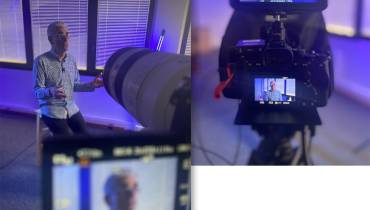How Creativity in Marketing Has Evolved—What It Looks Like Today
![How Creativity in Marketing Has Evolved—What It Looks Like Now [node:title]](/sites/default/files/styles/wide/public/creativity_in_marketing.jpg?itok=qdhQSE7F)
The days when creativity in marketing was merely about eye-catching images and slogans are behind us. Creativity in marketing today implies innovation more so than imagination.
Yet that doesn’t mean you should completely abandon traditional marketing and advertising strategies that use offline materials and become a pure advocate of digital marketing only.
What we mean is you should change your approach to marketing and implement a hybrid of traditional and modern promotions across all channels where applicable, specifically leveraging new digital marketing tools and strategies for success.
But what is creativity in marketing, to begin with?
Creativity is taking a unique approach that allows you to stand out from the crowd. Basically, it’s the ultimate purpose of any marketing campaign. Prospects should remember you. The best way to achieve such an outcome is to demonstrate your true value in an unconventional way.
Evolution of Creativity: How It Is Used in Marketing Campaigns
After analyzing 500 FMCG campaigns designed to promote, differentiate, and ultimately sell consumer goods that are frequently purchased and consumed, Nielsen observed that creativity was responsible for almost 50% of the sales uplift.
Creativity in marketing is a blend of customer-centric approaches that draw from the true essence of a brand and its value perception and delivery. All this to present an unforgettable experience to customers.
Data from Salesforce actually found that a whopping 84% of consumers say that experience during interactions with a brand is as valuable as the product or service itself.
Savvy brands and marketers have, therefore, had to evolved their marketing strategies to align with evolving customer needs and expectations.
Brands now use some key strategies and techniques to showcase their innovation, leverage their creativity for marketing purposes, and boost their bottom line, including:
I. Brand Storytelling
Brand storytelling is not about telling a story of your company by publishing it in a corporate blog or on social media only. It involves embedding the story into all customer touchpoints, meaning everything from your website to the product packaging should tell the story you want to deliver.
Why stories? They are highly engaging. Brands aren’t the sellers only. They are living organisms. And customers want to see that. They want to know what you stand for, what are your values, mission, and principles.
Remember Nike, the shoe seller that advocates for promoting sports to everyone. They tell stories, not merely advertising the features of new sneakers.
II. Customer-Centric Approach
We usually understand a customer-centric approach in terms of targeting. Therefore, it’s more like a synonym to personalization. But creativity here is beyond algorithms and piles of data about behavioral patterns. It’s about developing ideas together with your clients.
Data and network solutions provider Brocade is a good example. The company identified the top 200 clients that made up 80% of sales and started to cooperate with them in their marketing. Brocade worked hard to understand what satisfies and dissatisfies the customers. They even shared insights of their findings with the clients themselves.
As a result, the company improved its net promoter score (NPS) from 50 to 62 within 18 months. NPS is a measure that indicates customer loyalty by measuring how likely a customer is to recommend your business.
III. End-to-End Customer Experience
Customer experience isn’t limited to the usage of a product or service. Today, meaningful interactions are essential throughout the entire customer journey.
End-to-end customer experience thus involves all the touchpoints, begining from the moment a prospect gets to know about you. Also of high importance are after-sales service and further assistance after they have purchased a product or service.
High-quality service throughout the buyers' journey can transform customers to brand ambassadors. It means they become advocates for your business and your loyal marketing army.
Gartner analytics suggests that brands should focus on how they can help a client solve a problem, rather than aim to use all the data for targeting.





















